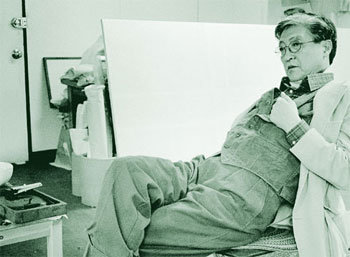Han Chang-ki Is Koreas Culture Man

In early February 1997, a Korean man passed away. The world mourned his death. Here is how newspapers reported his death:
Graduated from the Law Department of Seoul National University Realizes he is not cut out to be a lawyer sells flight tickets and bibles to U.S. 8th Army personnel and introduces the Encyclopedia Britannica to South Korea adopts Korean-only and horizontal writing with the creation of the magazine Deeply Rooted Tree in 1976 launched the magazine Water in a Deep Well after Deeply Rooted Tree was forced to close by military dictatorship in 1980 showed extraordinary passion in reviving Korean traditional culture with the publication of The Discovery of Korea and The Complete Pansori Collection .
Though his life can be written in many lines, it is perhaps more than sufficient to tell it in one: his monthly magazines. Though no longer published, his two magazines were a symbol to those who loved Korean history and tradition, and were some of the most influential papers of their time.
The mans name is Han Chang-ki (1936-1997).
The three books introduced here are collections of his writings throughout his life. Yun Gu-byeong (president of the Byeoksan Community), Kim Hyeong-yun (president of the Kim Yeong-yun Editing Company), and Seol Ho-jeong (the PR director of Pulmuwon), who all edited Deeply Rooted Tree and Water in Deep Well compiled Hans writing into three books.
These books let readers discover the deep passion of the author for the beauty of old things. He looks at old things with sensitivity and warmth. Digging past tombs and looking for cultural remains is seen as seeking the spirit of our ancestors, but that is not all it is. Spirits are in the forked rakes of farmers and in the burners where grannies burn straws. The spirit of Korea is clotted in every straw sandal knuckle and every knot of a hat string. It is in the muddy taste of rice in soup, and can be found at the end of the flower-shaped hairpin of a new bride (1973).
His words were not written in front of a desk, but out on streets after encounters with people. This makes them more vivid. He writes from the Beolgyo five-day market to Andongpo; he writes about cloth, porcelain furnace, the roofs of old houses, and buttons made of magoja (jacket) and jokki (vest).
Five-day Market in the Countryside (1977) begins as follows: There are six paths to the Beolgyo market place. A few steps into the corner lead to a busy array of tinkers, butchers, shoe repairers, and umbrella fixers. The eyes of the author carefully examine every part of the market filled with sesame oil stores, rice stores, kitchen-hardware shops, dried seafood shops, fabric shops, and dishware stores. The following story of the drunkard who drums on the table with chopsticks and of Min, the waitress of a small tavern, makes readers feel as if they are in the marketplace themselves.
His love for the Korean language is also conspicuous. The story about his efforts to preserve the purity of Korean language, and the one about the difference between isseoseo and isseoseo-eui, or between ttaemun and kkadak (Korean words with similar meanings) are also interesting.
The Lives of Those People (1984) is an article included in Discovery of Korea that deserves a place in Korean anthropology and folklore. This piece of writing describes the lives of those in their forties or fifties then who were born in South Jeolla Province. It touchingly depicts the life of a person with the sentence: When his granny who assisted in his birth cut his navel string wrapped up in cotton thread with her teeth or scissors, he took his first breath of life in this world deep in the southwestern part of the Korean peninsula.
His writings are a testament to the simplicity and courtesy of his life. Han was a man of culture who tried to live his life seriously and beautifully.
kplee@donga.com







